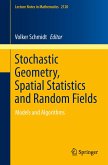Stochastic geometry is the branch of mathematics that studies geometric structures associated with random configurations, such as random graphs, tilings and mosaics. Due to its close ties with stereology and spatial statistics, the results in this area are relevant for a large number of important applications, e.g. to the mathematical modeling and statistical analysis of telecommunication networks, geostatistics and image analysis. In recent years - due mainly to the impetus of the authors and their collaborators - a powerful connection has been established between stochastic geometry and the Malliavin calculus of variations, which is a collection of probabilistic techniques based on the properties of infinite-dimensional differential operators. This has led in particular to the discovery of a large number of new quantitative limit theorems for high-dimensional geometric objects.
This unique book presents an organic collection of authoritative surveys writtenbythe principal actors in this rapidly evolving field, offering a rigorous yet lively presentation of its many facets.
This unique book presents an organic collection of authoritative surveys writtenbythe principal actors in this rapidly evolving field, offering a rigorous yet lively presentation of its many facets.
"The chapters are mostly self-contained-with ample references to the current literature-but style and notation are carefully harmonized, so that the text can be used and read in different ways: as always, linear reading from cover to cover is possible, but also the selective reader will find it easy to extract information from the text, and so will anyone searching for a quick reference." (René L. Schilling, Mathematical Reviews, March, 2018)








